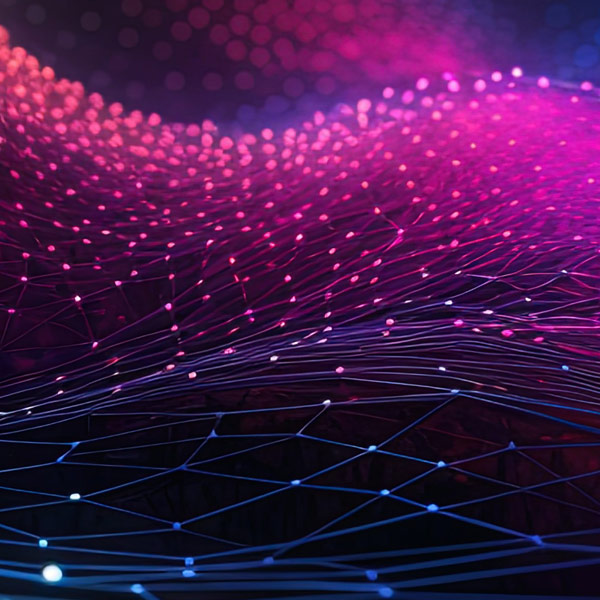
One crucial part of Big Data is streaming data. As the name suggests, streaming data refers to data that undergoes continuous generation from multiple sources like social media, CRM, and ERM platforms. Handling and analyzing streaming data can be complex, as data arrives from numerous sources and in various formats. It requires consideration of data integration points, data types, and use cases. There is a continuous search for technologies, tools, and processes to harness the power of streaming data through stream processing.
In this article, we’ll look at Spark Streaming and how it compares with other stream processing tools to let data scientists and engineers make the most from streaming data. It is important to note before we begin that Spark Streaming is a legacy project and is no longer being updated. The newer streaming engine is called Structured Streaming.
What is Spark Streaming?
Spark Streaming represents an extension of the core Spark API that helps provide scalable, high-throughput, fault-tolerant, live stream processing. First, Spark streaming ingests data from sources like Kafka and Kinesis. Then, it applies processing algorithms with functions like map, reduce, join, and window to these streams to process them and push them to destinations like file systems, dashboards, and databases.
Spark works on a Discretized Stream (DStream), which represents a continuous data stream. DStreams are a collection of Resilient Distributed Datasets (RDDs), low-level APIs that, although excellent, can cause performance issues because of serialization or memory challenges. Spark Streaming improved on traditional streaming methods, which employed continuous operations.
In the continuous operation method, data is ingested from sources into systems like Kafka and Kinesis and processed in parallel on a cluster. However, this model isn’t practical and faces issues like a faster failure, longer recovery, and slower responsiveness to ad-hoc queries, all of which are important to real-time stream processing today.
Here are some core features of Spark Streaming that help solve the traditional stream processing methods:
- Fault tolerance and high availability: DStreams are a collection of RDDs, the critical fundamental structure of Spark that ensures fault tolerance and high availability of data streams. Spark Streaming utilizes the RDD lineage graph (DAG) to help recompute missing nodes or partitions in the case of failures. For high availability, RDDs ensure data streams reside on multiple nodes. Combining the partitioning with several nodes for each data stream ensures that a replica node takes over in the event of a failure and that streaming remains continuous.
- Singular execution engine: Unlike traditional methods that separate stream and batch processing, Spark Streaming utilizes a single processing engine for performing batch processing for static datasets and ad-hoc interactive queries, providing a more robust solution.
- Native integrations: Spark Streaming offers native integrations with processing libraries like SQL, machine learning, and graph processing. Additionally, because Spark Streaming utilizes RDDs like Spark, it can integrate seamlessly with other Spark components like MLlib and Spark SQL.
Spark Streaming alternatives
Other Spark alternative tools exist for streaming analytics to serve stream processing needs. Primarily, the supported replacement, Structured Streaming. In addition, popular alternatives to stream processing include Kafka streaming, Apache Flink, and the StreamSets Transformer for Spark Engine. Although these tools have a common purpose of helping service streaming needs, they differ in latency, source compatibility, fault tolerance, disaster recovery, ease of use, and support for other programming languages.
Spark Streaming vs Kafka Streaming
- Latency and data sources compatibility: Kafka has stream processing latency lower than milliseconds, a bit lower than Spark Streaming. Kafka represents the superior choice if the goal is to achieve low latency, with little concern for compatibility with other source systems because compatibility with different source systems can be challenging for Kafka. Hence, if latency of milliseconds works for your data needs and you need to integrate with multiple source systems, Spark Streaming represents the superior choice as Spark offers seamless flexibility and compatibility with other tools.
- Fault tolerance and disaster recovery: Kafka ensures fault tolerance in times of disaster by using its replication factor. Kafka creates copies of its data in other brokers called replicas. In the case of a failure, other partitions take up the load of the failed partition, resulting in continuous availability. For Spark, the existence of RDDs in its nodes helps ensure availability and prevent data loss.
- Extract, Transform, Load (ETL): Spark Streaming allows the extraction, transformation, and loading of data from one source to a destination, thereby allowing ETL processes. For Kafka, streaming ETL services isn’t possible unless used with the Kafka Connect API and the Kafka Streams API, which help it build streaming data pipelines that help transform data.
- Support for programming languages: Kafka provides support for Java. However, Spark Streaming offers support in many languages like Java, Scala, R, and Python.
- Processing method: Kafka processes data streams continuously as they arrive. For Spark Streaming, data streams undergo splitting into micro-batches before undergoing processing.
Spark Streaming vs Structured Streaming
Spark Structured Streaming is an improved Spark Streaming engine for handling streaming data. Built as part of Spark 2.0 on the Spark SQL library, Structured Streaming uses the Dataframe or Dataset APIs, offering a higher abstraction level than Spark Streaming RDDs. Also, with Spark structured streaming, there is better developmental support provided by SQL functions. Here are some noteworthy differences between Spark Streaming and Spark Structured Streaming:
- Dataframes and RDDs: While structured streaming and Spark Streaming use the same data polling architecture, Spark structured streaming uses Dataframe or Dataset APIs, which optimize processing and offer more options for aggregations and other operations with a variety of functions available. However, Spark Streaming uses RDDs that may create an inefficient RDD transformation chain.
- Latency: Again, RDDs by Spark Streaming and Dataframes/Dataset APIs by Spark Structured Streaming impact streaming operations’ latency. For Spark Streaming, the micro-seconds Dstreams use to break data into RDDs increase the latency for streams, thereby affecting the overall outcome of analytical workloads. However, for Spark Structured Streaming, the Dataframe API offers a greater abstraction, as users no longer need to deal with RDD blocks directly, reducing latency, increasing throughput, and guaranteeing message delivery.
- Event time processing and data loss: Since Spark Streaming doesn’t include a feature that includes the event time for an event and places data into batches based on the ingestion timestamp, it may cause data loss and lead to inaccurate analysis. This loss results because the ingestion time for an event may increase because of latencies in data generation and data movement to the Spark processing engine. Since some data may arrive late, long after the event occurs, it undergoes late processing with newer data, resulting in inaccurate analysis. For structured streaming, there is the event time feature, which tells the time for data generation, making it possible to process data accurately according to their event time.
Spark Streaming vs StreamSets
StreamSets utilizes a Transformer engine that helps users build streaming applications on Spark. The transformer engine abstracts users from the Spark cluster and allows them to focus on the business problem by providing deep visibility into their data streaming process. Let’s see how Spark Streaming compares with StreamSets:
- Latency: StreamSets Transformer engine performs its streaming operations at a second-level pace, while Spark Streaming operates at a sub-second speed to achieve end-to-end latencies as low as one millisecond with at least-once guarantees. Hence, Spark Streaming operates at a faster latency.
- Connectors support: Spark Streaming offers limited support for connectors because Spark requires specific implementation, which third-party connectors may not possess. For the StreamSets Transformer, the only requirement is that those origins can handle offset. Hence, Transformer offers more connectors, which can improve the breadth of your pipelines. For example, Spark Streaming offers no JDBC support, while StreamSets does.
- Extract, Transform, Load (ETL): As mentioned, Spark Streaming does allow for ETL. On the other hand, full capability data Integration tools like the StreamSets Transformer for Spark engine can be a more powerful enterprise solution to an organization’s ETL need while still leveraging the power of Spark.
- Ease of Use: If you’re not a programmer, but are instead a subject matter expert or data specialist, no-code solutions like StreamSets can be a viable alternative to Spark Streaming. You can get started making pipelines quickly without going into depth on low-level concepts.
- Metrics: Unlike Spark Streaming, StreamSets offers incremental metrics, meaning you can determine how much data is received in a micro batch. This type of detail can be key when optimizing and troubleshooting pipelines.
Conclusion
The primary alternative to Spark Streaming, is the Spark Structured Streaming engine which is now the only Apache engine being supported. However, there are alternatives in the marketplace that can significantly lower the cost of entry to use Spark. Consider that while Spark Streaming might have lower latency, it does not have the power, extensibility, and usability features that a low code data integration tool like StreamSets does.
When choosing between alternatives, it’s important to assess your organization’s requirements. Is it more important to be able to get pipelines up quickly and have them stay up due to the monitoring and metrics-gathering capabilities of a product like StreamSets, or does your organization have alternative requirements? Only a deep dive into your individual needs can address that question.



